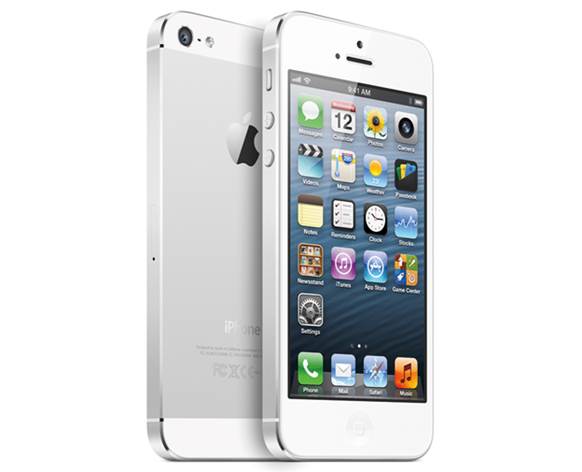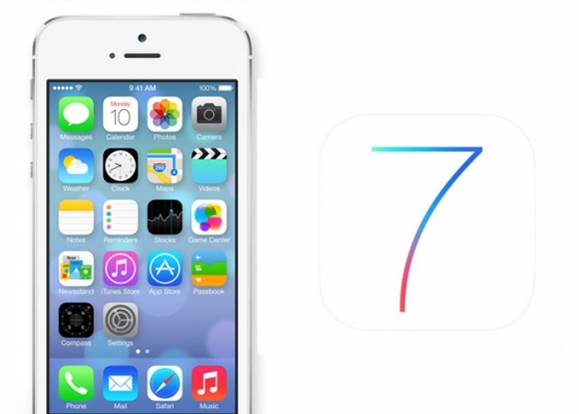Apple impresses the Crowd at WWDC
Has Apple lost the innovative edge that it
enjoyed under the late Steve Jobs, and is there any chance of it being
regained? Those are the questions that have been increasingly vexing industry
observers since the passing of the California firm’s former CEO in late 2011,
as Apple’s stock price has slumped and incumbent boss Tim Cook has seemingly
struggled to quell growing shareholder discontent. Now we have the chance to
see more of the case for the defense, in the form of the company’s 2013
Developer’s conference.
For now, though, we can scrutinize many of
the more technical details of yesterday’s announcements, covering the new Mac
Pro, MacBook Air, OS X Mavericks, iOS 7 and iTunes Radio.

Cupertino
Comes Out Fighting
A Mac operating system update with more
than 200 new features
After appearing on stage at 10am and
soaking up the applause of the software developers and other Apple fans in
attendance, Tim Cook got the keynote started with a celebration of the
Cupertino firm’s more than 400 retail stores across the world, as well as the
App Store. Before long, though, focus fell on the technical details of the new
releases that had really got people attending – and as far as starts go, the
developer preview of the latest Mac operating system, OS X Mavericks, was not a
bad one.
Hailed as “the next big release of the
world’s most advanced desktop operating system”, OS X Mavericks incorporates
more than 200 new features, including the introduction of iOS apps, Maps and
iBooks, to the Mac, as well as Finder Tags and Tabs. Power users, meanwhile,
will benefits from enhanced multi-display support, and “new core technologies”
also ensure “breakthrough power efficiency and performance”.
Oh, and Safari is all-new as well,
apparently delivering a better performance, innovative features and
breakthrough technologies. The browser has a new process-per-tab
infrastructure, for instance, which allows for greater security, stability and
responsiveness, while another innovative feature is Shared Links, which enables
the easy discovery, reading and sharing of interesting new Twitter and LinkedIn
content in one place.
Other features for Mac users to look out
for when OS X Mavericks is finally made available to download this fall include
an updated Calendar, interactive Notifications and iCloud Keychain, which
removes the need to remember website login details, Wi-Fi passwords and credit
card numbers by safely storing and pushing them to devices.

Other
features for Mac users to look out for when OS X Mavericks is finally made
available to download this fall include an updated Calendar, interactive
Notifications and iCloud Keychain
Improvements for MacBook Air… and a new
MacBook Pro
It wasn’t even yet 11 am in Cupertino when
attention turned form the many new features of OS X Mavericks, as explained by
Apple’s senior vice president of Software Engineering Craig Federighi, to
changes to the MacBook range. More specifically, we’re getting new MacBook Airs
with better battery life. In the case of the 11-inch model, that means that the
battery will now last nine hours rather than the previous five, while battery
life for the 13-inch model will be bumped up from seven hours to 12. The new
MacBook Airs, which are lighter and thinner than traditional laptops, start
shipping on Monday for prices starting at $999 and $1,099 respectively. Apple
also showed a video previewing the MacBook Pro that it said will be available
later this year. As well as better graphics performance, customers can expect
faster connectivity through Thunderbolt 2 ports. Those who were encouraged by
the Cupertino firm’s previous pledge to move manufacturing of one of its
existing Mac computer lines to the United States will also be pleased to hear
that this is where the MacBook Pro is to be assembled.

The
new MacBook Airs, which are lighter and thinner than traditional laptops
A complete redesign, new user interface
and new features for iOS 7
After showing off an upgraded version of
the iWork productivity software suite, it was time for Apple to throw the veil
off one of its new developments that simply has to be brilliant if the company
is to regain its renown for innovation: iOS 7. It is quite simply the most
significant iOS update since the 2003 emergence interface. The complete
redesign has made the operating system “feel more alive”, according to Apple,
thanks to what it describes as “subtle motion, an elegant color palette and
distinct, functional layers”. Tasks are now more engaging due to the use of
translucency and motion, while even the typography looks cleaner and simpler.
The platform update is also characterized by a wealth of new features, from
Siri, Control Center and Notification Center to AirDrop, enhanced Photos and
improved Multitasking.
As you would expect, the new design has
plenty to do with Apple’s celebrated Senior Vice President of Design, Jony Ive,
who said that “true simplicity” was about not “just the absence of clutter or
ornamentation”, but also “bringing order to complexity”. He said that iOS 7 was
in keeping with such goals, incorporating a whole new, system-wide and coherent
structure – although the end result, despite its entirely new user interfaces,
is also familiar if you are an existing iDevice user. Nonetheless, the redesigned
fonts definitely look sharp on the Retina display, while the interface has been
designed to take advantage of the entire screen, which means that the phone
actually appears bigger.

iOS
7 was in keeping with such goals, incorporating a whole new, system-wide and
coherent structure
As for the new features, one of them is
Control Center, which brings together all of the controls that users want to
quickly access in one convenient place. Users simply have to swipe the bottom
of the screen to be given instant access to apps like Clock, Calculator, Camera
and the Flashlight, as well as the controls for Wi-Fi, Bluetooth, Airplane Mode
and do not disturb. It also gives users the option to play or pause a song,
jump to the next track or adjust screen brightness. iOS 7 also makes available
Notification Center from the Lock screen, allowing users to apply just one
swipe to see all of their notifications.
As aforementioned, Multitasking has also
been improved in iOS 7, as evidenced in part by the ability that it gives
developers to make it possible for any app to multitask in the background with
a new API. Switching between apps now happens more visually and intuitively,
and attention is paid by iOS 7 to the most frequently used apps, automatically
keeping the user’s content up to date in the background.